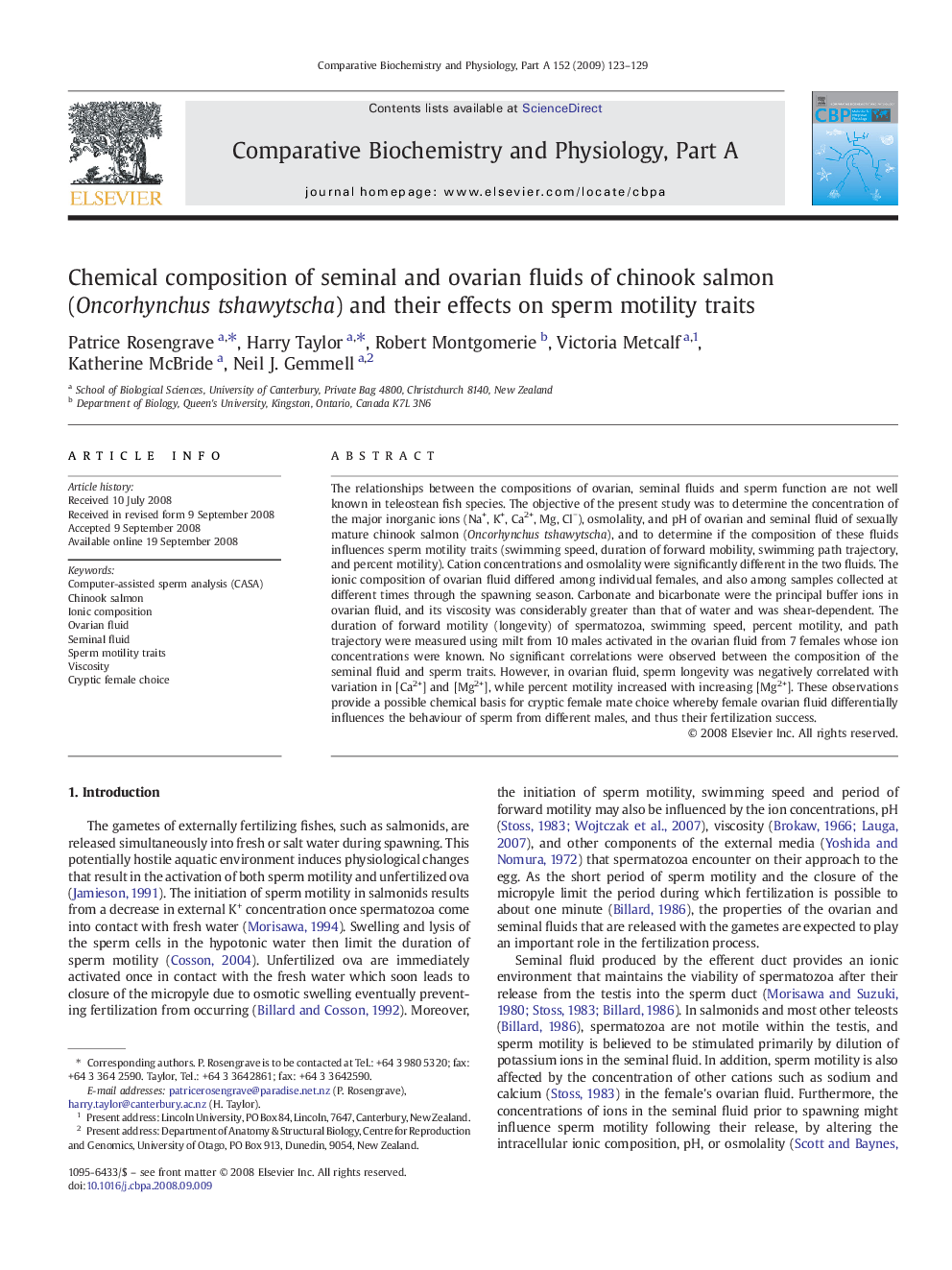| Article ID | Journal | Published Year | Pages | File Type |
|---|---|---|---|---|
| 1973811 | Comparative Biochemistry and Physiology Part A: Molecular & Integrative Physiology | 2009 | 7 Pages |
Abstract
The relationships between the compositions of ovarian, seminal fluids and sperm function are not well known in teleostean fish species. The objective of the present study was to determine the concentration of the major inorganic ions (Na+, K+, Ca2+, Mg, Clâ), osmolality, and pH of ovarian and seminal fluid of sexually mature chinook salmon (Oncorhynchus tshawytscha), and to determine if the composition of these fluids influences sperm motility traits (swimming speed, duration of forward mobility, swimming path trajectory, and percent motility). Cation concentrations and osmolality were significantly different in the two fluids. The ionic composition of ovarian fluid differed among individual females, and also among samples collected at different times through the spawning season. Carbonate and bicarbonate were the principal buffer ions in ovarian fluid, and its viscosity was considerably greater than that of water and was shear-dependent. The duration of forward motility (longevity) of spermatozoa, swimming speed, percent motility, and path trajectory were measured using milt from 10 males activated in the ovarian fluid from 7 females whose ion concentrations were known. No significant correlations were observed between the composition of the seminal fluid and sperm traits. However, in ovarian fluid, sperm longevity was negatively correlated with variation in [Ca2+] and [Mg2+], while percent motility increased with increasing [Mg2+]. These observations provide a possible chemical basis for cryptic female mate choice whereby female ovarian fluid differentially influences the behaviour of sperm from different males, and thus their fertilization success.
Keywords
Related Topics
Life Sciences
Biochemistry, Genetics and Molecular Biology
Biochemistry
Authors
Patrice Rosengrave, Harry Taylor, Robert Montgomerie, Victoria Metcalf, Katherine McBride, Neil J. Gemmell,
